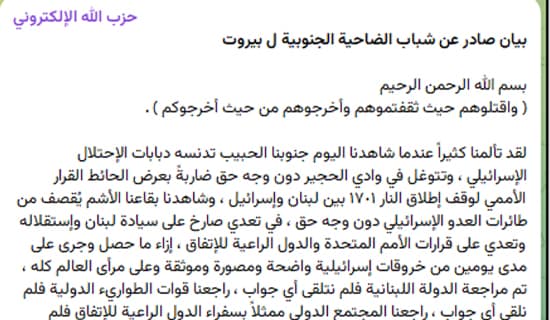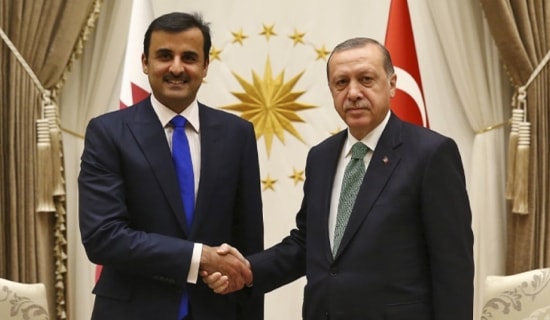The JCPOA's Inspection Procedure Precludes Actual Inspection And Proof Of Violations
The public debate in the U.S. over the future of the JCPOA, amid media reports that President Trump has demanded that his national security team provide evidence of Iranian violations of the agreement by October 2017,[1] is a futile debate.
It will not be possible, neither in October nor at any other time, to prove that Iran is in violation of the JCPOA – even if the U.S. has intelligence that proves that it is. This is because the inspection procedure designed by the Obama administration precludes actual inspection – at Iran's military sites and at any other suspect site, with the exclusion of Iran's declared nuclear sites.
Accordingly, the demand that intelligence information on Iranian violations be presented as a condition for taking steps against the JCPOA is based on inadequate knowledge of what the JCPOA stipulates. This is because under the agreement, the obtaining of such intelligence information is only the beginning of a detailed and binding process, which delays and in actuality does not enable inspection of a suspected site at all. Instead of an inspection of a site being immediately triggered when such information is obtained, the JCPOA requires a series of preliminary steps before any such inspection will be permitted – if it is permitted at all. That is, under the JCPOA, the U.S. must:
a) Hand over the intelligence information and information on its sources to Iran for the purpose of clarifying "concerns," both in discussions between the International Atomic Energy Agency (IAEA) and Iran, and in discussions with the Joint Commission of the JCPOA – which in addition to the U.S., U.K., France, Germany, and the IAEA includes Iran, Russia, and China – with the aim of clearing up the concerns via alternative ways that will not involve inspection of the site. The demand to reveal this information and its sources to Iran, Russia, and China is ridiculous and the U.S. cannot agree to it; since these are the conditions of the JCPOA, no further action is actually possible.
b) If no agreement on alternative ways not involving inspection of the site can be reached, there will be an additional discussion in the Joint Commission, where decisions on this matter are to be made by majority vote within seven days. Iran must comply with the decision within three additional days.
This ridiculous inspection procedure obviously does not enable any real investigation of Iran's continuing military nuclear activity, even when there is intelligence information about it. This situation is in direct contradiction with President Obama's commitment when the JCPAO was announced on July 14, 2015: "Inspectors will also be able to access any suspicious location. Put simply, the organization responsible for the inspections, the IAEA, will have access where necessary, when necessary."[2]
It should be clarified that the heart of the JCPOA lies in the lifting of the nuclear sanctions on Iran, in exchange for Iran's temporary and targeted suspension of some of its nuclear activity. The inspection procedure is not the heart of the agreement; this procedure is a section of the JCPOA aimed at ensuring that the JCPOA's conditions are met. Additionally, it should also be mentioned that Iran and the IAEA Iran had, in July 2015, reached a "road map" agreement to resolve the military aspects of Iran's nuclear program – the content of which is secret.[3] Accordingly, every demand by the U.S. administration aimed at changing the inspection procedure, if such a demand is made, will not constitute a demand to change the heart of the JCPOA itself – and in fact will even reinforce the JCPOA by reinforcing its inspection procedure. However, without any change to the inspection procedure itself, Iran will be able to covertly advance its military nuclear development, and there will be no real way of overseeing that development. Even if intelligence information from outside the inspection procedure is obtained, the JCPOA's provisions make it worthless (see Appendix).
Iranian Regime: We Will Never Allow IAEA Inspectors Access To Military Sites
As soon as the JCPOA was announced, on July 14, 2015, Iranian regime officials, headed by Supreme Leader Ali Khamenei and top Islamic Revolutionary Guards Corps (IRGC) commanders, stressed that IAEA inspectors would not be given access to Iran's military sites for inspection purposes.
Khamenei, July 25, 2015: "[The foreigners] shouldn't be allowed at all to penetrate into the country's security and defensive boundaries under the pretext of supervision, and the country's military officials are not permitted at all to allow the foreigners to cross these boundaries or stop the country's defensive development under the pretext of supervision and inspection."[4]
Foreign Minister Javad Zarif, July 22, 2015: Inspections of this kind cross "the red lines" and in the [JCPOA] negotiations Iran had "succeeded in fully ensuring" that the agreement would not allow such inspections.[5]
Khamenei's top adviser for international affairs, Ali Akbar Velayati, July 2015 to the Arabic service of Al-Jazeera TV: "Access of inspectors from the IAEA or from any other body to Iran's military centers is forbidden."[6]
More recently, IRGC Aerospace Force commander Amir Ali Hajizadeh, August 7, 2017: "In the matter of the Westerners' request to inspect our military centers, the answer is clear. We will not allow them to do such a thing."[7]
IRGC deputy commander Hossein Salami, August 12, 2017: "I say to the dear Iranian nation, to America, and to the entire world: If in all of history and in the world, there is [only] one request that will not be complied with and will receive a negative answer, it is this request. And if there is one wish that will be buried with those wishing it, it is the wish that they will visit our military centers."[8]
Appendix: What The JCPOA Says About The Inspection Procedure
The JCPOA's "Q. Access" section, paragraphs 74-78, dealing with the inspection procedure:
The agreement specifies that requests for access for inspection "will not be aimed at interfering with Iranian military or other national security activities." Furthermore, if the IAEA obtains secret intelligence information, it "will provide Iran the basis for such concerns and request clarification."
Further: "If Iran's explanations do not resolve the IAEA's concerns, the Agency may request access to such locations for the sole reason to verify the absence of undeclared nuclear materials and activities or activities inconsistent with the JCPOA at such locations. The IAEA will provide Iran the reasons for access in writing and will make available relevant information."
It continues: "Iran may propose to the IAEA alternative means of resolving the IAEA's concerns that enable the IAEA to verify the absence of undeclared nuclear materials and activities or activities inconsistent with the JCPOA at the location in question, which should be given due and prompt consideration.
"If the absence of undeclared nuclear materials and activities or activities inconsistent with the JCPOA cannot be verified after the implementation of the alternative arrangements agreed by Iran and the IAEA, or if the two sides are unable to reach satisfactory arrangements to verify the absence of undeclared nuclear materials and activities or activities inconsistent with the JCPOA at the specified locations within 14 days of the IAEA's original request for access, Iran, in consultation with the members of the Joint Commission, would resolve the IAEA’s concerns through necessary means agreed between Iran and the IAEA. In the absence of an agreement, the members of the Joint Commission, by consensus or by a vote of 5 or more of its 8 members, would advise on the necessary means to resolve the IAEA's concerns. The process of consultation with, and any action by, the members of the Joint Commission would not exceed 7 days, and Iran would implement the necessary means within 3 additional days."[9]
*Y. Carmon is President of MEMRI; A. Savyon is Director of MEMRI's Iran Studies Project.
[1] October 2017 is the deadline for the U.S. administration to notify Congress whether or not Iran is complying with the JCPOA.
[2] Statement by the President on Iran, July 14, 2015,
Obamawhitehouse.archives.gov/the-press-office/2015/07/14/statement-president-iran.
[3] See MEMRI Special Dispatch No. 6113, Atomic Energy Organization Of Iran Chief Ali Akbar Salehi: We Have Reached An Understanding With The IAEA On The PMD, Now Political Backing Exists And The Results Will Be Very Positive, July 22, 2015.
[4] English.farsnews.com, July 25, 2015. See also MEMRI Daily Brief No. 57, What Iran Is Permitted To Do Under The JCPOA, September 17, 2015.
[5] Latimes.com, July 22, 2015. See also MEMRI Daily Brief No. 57, What Iran Is Permitted To Do Under The JCPOA, September 17, 2015.
[6] English.farsnews.com, July 25 and August 1, 2015.
[7] Tasnim (Iran), August 7, 2017.
[8] Asr-e Iran (Iran), August 13, 2017.
[9] Apps.washingtonpost.com/g/documents/world/full-text-of-the-iran-nuclear-deal/1651.




